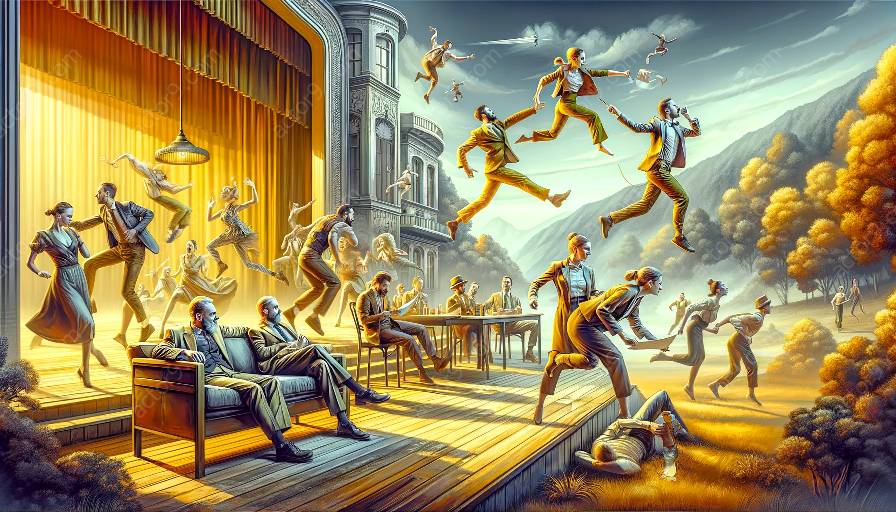Physical theatre is a style of performance that is known for its expressive and dynamic use of the body to convey emotions and tell stories. When it comes to comedic aspects of physical theatre, there are several key elements that contribute to the humor and entertainment value of the performances. In this article, we will explore the comedic elements in physical theatre, including slapstick, mime, and exaggerated movements, and how they are utilized to create humor on stage.
Slapstick
One of the quintessential comedic elements in physical theatre is slapstick. Slapstick comedy involves exaggerated physical actions, such as falls, collisions, and other mishaps that are often accompanied by humorous sound effects. These actions are performed in a way that is meant to be perceived as humorous, and they often result in the audience erupting into laughter. Slapstick in physical theatre relies on precise timing and physical prowess, as performers need to execute the actions in a way that is both believable and amusing.
Mime
Mime is another comedic element commonly used in physical theatre. Mime involves the use of exaggerated gestures and facial expressions to convey actions and emotions without words. In comedic physical theatre, mime is often used to create humorous situations and characters, relying on the physical skill and precision of the performers to bring the humor to life. The use of mime in physical theatre allows for the exploration of comedic scenarios that transcend language barriers and can be universally understood and appreciated by audiences.
Exaggerated Movements
Exaggerated movements play a significant role in the comedic aspects of physical theatre. Performers utilize larger-than-life gestures, facial expressions, and body language to amplify the humor in their performances. These exaggerated movements often border on the absurd, adding an extra layer of comedic effect to the physical storytelling. By accentuating movements and expressions, performers in physical theatre can create comedic characters and situations that capture the audience's attention and tickle their funny bones.
Physical Comedy and Timing
Physical comedy in theatre relies heavily on precision and timing. The execution of physical gags, slapstick routines, and mime performances requires impeccable timing to maximize comedic impact. Performers need to be in complete control of their bodies and movements, ensuring that every action and reaction is perfectly timed to elicit laughter from the audience. This skillful manipulation of timing is a crucial aspect of physical theatre's comedic elements.
Interaction and Audience Engagement
Another key comedic element in physical theatre is the interaction and engagement with the audience. Physical theatre performances often break the fourth wall, allowing performers to directly involve the audience in the comedic scenarios unfolding on stage. Whether through playful interactions, improvised moments, or audience participation, the inclusion of the audience adds an extra layer of humor and unpredictability to the performance, creating an immersive and entertaining experience.
Conclusion
The comedic elements in physical theatre, including slapstick, mime, exaggerated movements, precise timing, and audience engagement, are essential components that contribute to the humorous and entertaining nature of physical theatre performances. Through the skillful portrayal of comedic characters, situations, and interactions, physical theatre delights audiences with its unique blend of storytelling and physical humor, captivating people of all ages and backgrounds.




































